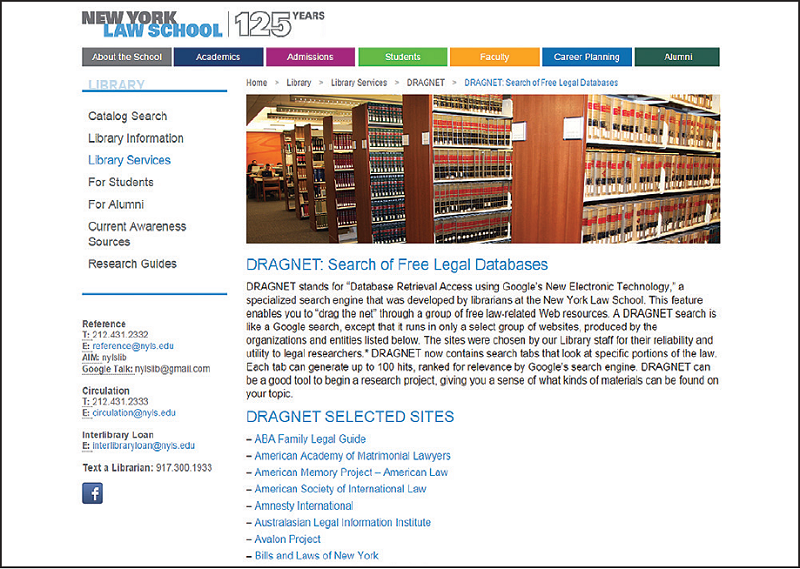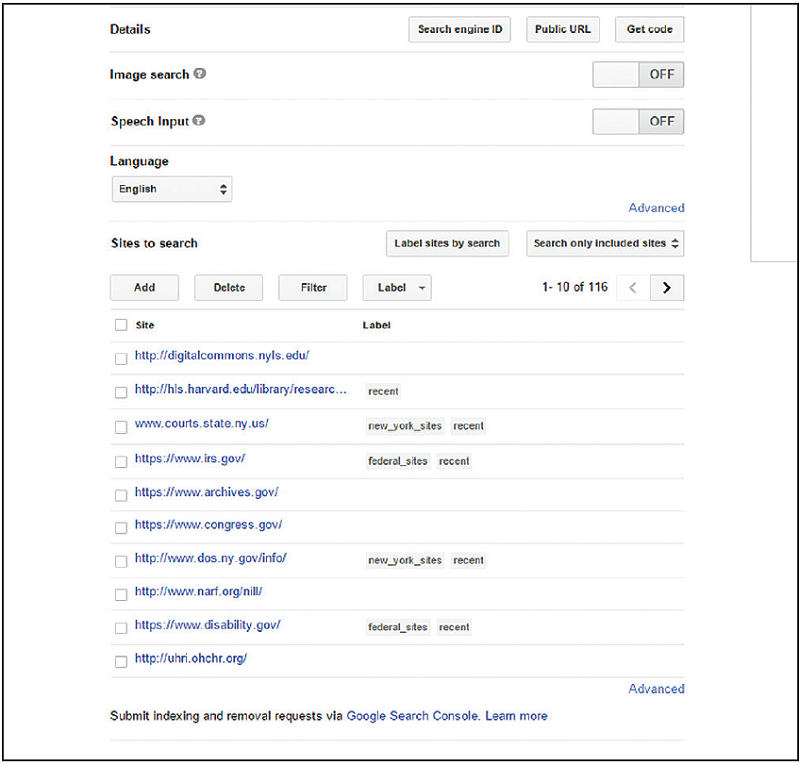To put it in its simplest terms, a CSE will make a Google Search like any other, but then filters out all results except from sources that you, the developer, specify. I tried this early on for sources in Irish history, but there were so few good sources, the results were too constricted. I would get eight or 10 hits on a topic. In 2010, I tried it again while working at the New York Law School. There are a great number of excellent free sites in the legal area, and my CSE soon approached 80 qualified entries. When we librarians made a search, the results came up in less than a second, and only included sites that we specifically included. This caused a minor sensation at a librarians’ meeting, and we soon had it up for our students with a new name—DRAGNET. It went on to win the library an award from the American Association of Law Libraries.
To give a real-world example of what CSE did for New York Law School, I tried searching the term “torts” and got a large number of hits—all from sources that the library had specified. If I try the same search in regular Google, I get millions more hits. Just for fun, I added the term “recipes” and found that the regular Google search included hundreds of thousands of pages about a pastry as well as the legal term. When used in the right way, CSE is an extremely useful tool.

DRAGNET, an award-winning CSE application that searches legal sources

The inner workings of a CSE account showing the assignment of sources to be searched
Terry Ballard is a retired librarian who worked in public and academic libraries. He is the author of three books and more than 75 articles, mostly about how libraries use technology to serve the information needs of their communities.